With one month to go before their April 16, 1972 launch to the Moon, the crew of Apollo 16, Commander John W. Young, Command Module Pilot Thomas K. “Ken” Mattingly, and Lunar Module Pilot Charles M. Duke, along with backups Fred W. Haise, Stuart A. Roosa, and Edgar D. Mitchell, continued to train for the mission. During the 12-day flight, Young and Duke planned to explore the Descartes site in the lunar highlands while Mattingly conducted scientific observations from lunar orbit. The astronauts received extensive geology instruction and rehearsed the spacewalks planned for their mission. These activities included deploying scientific instruments, driving the Lunar Roving Vehicle (LRV), and retrieving film canisters from science instruments. They trained for portions of their flight in mission simulators.
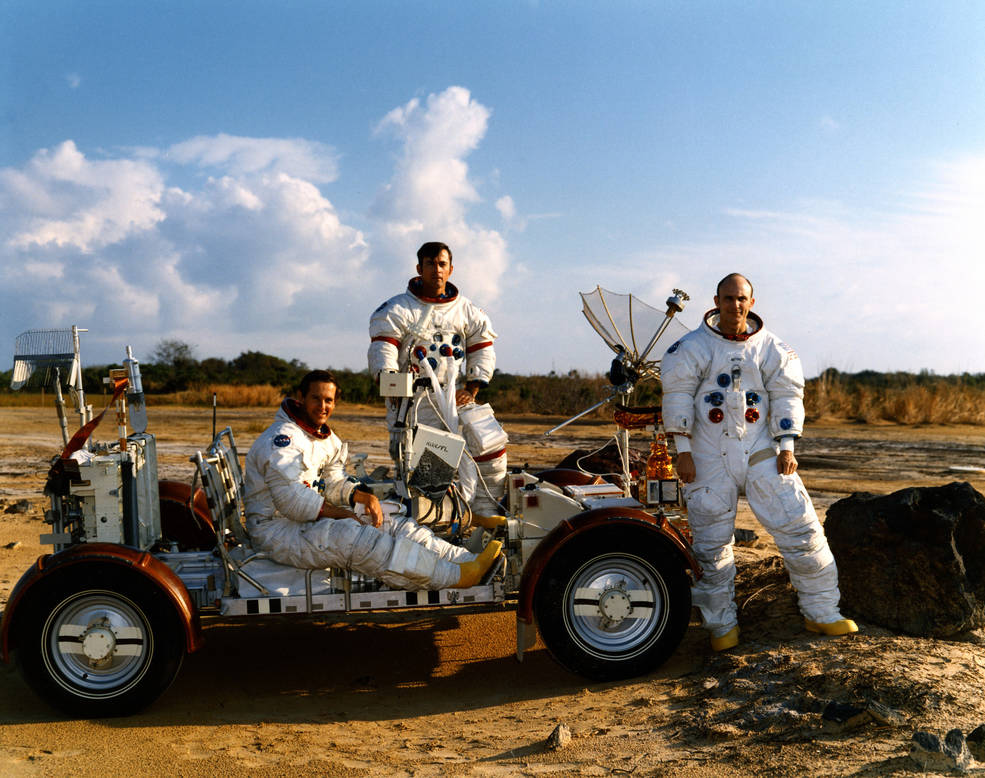
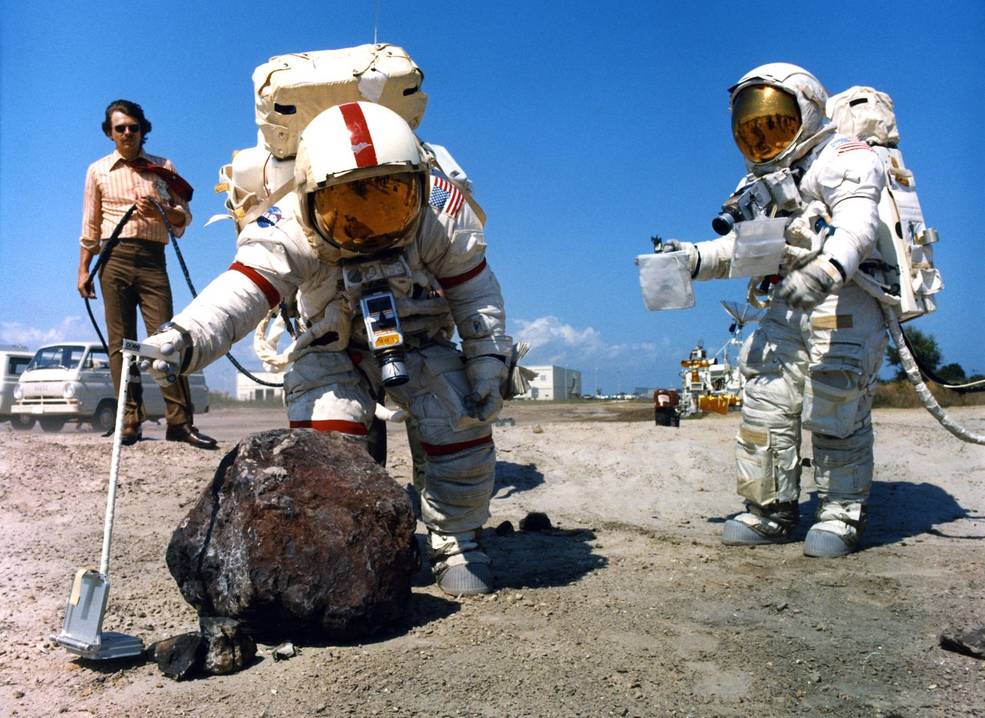
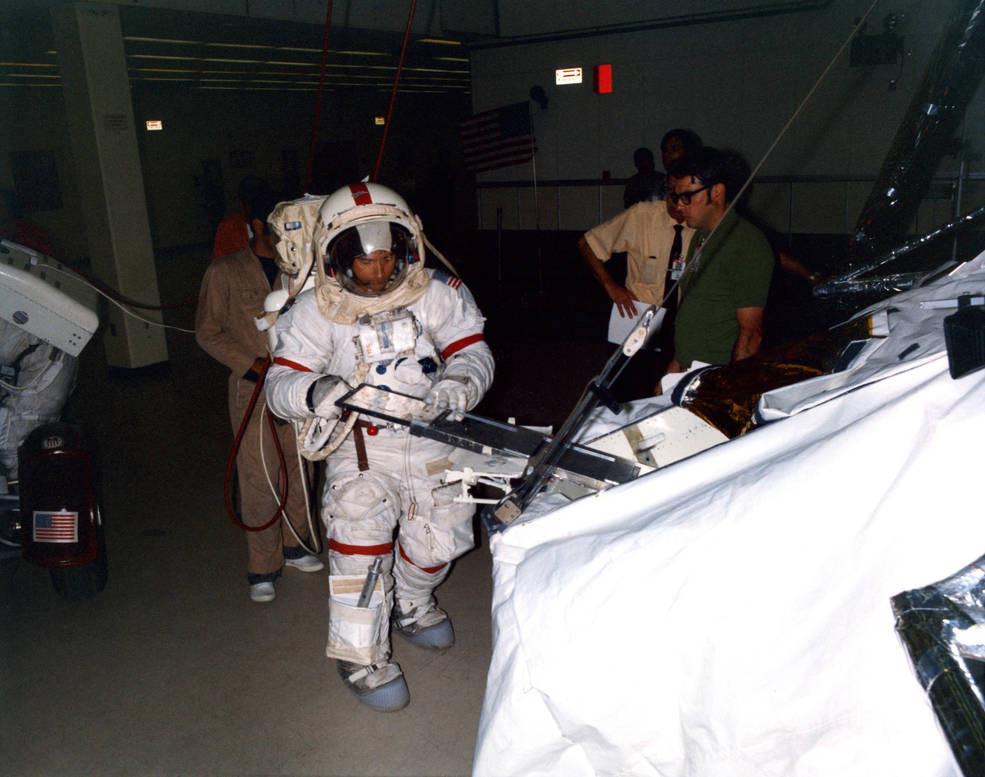
Left: Apollo 16 astronauts Charles M. Duke, left, John W Young, and Thomas K. “Ken” Mattingly pose with the Lunar Roving Vehicle training unit at NASA’s Kennedy Space Center in Florida. Middle: Young, left, and Duke practice collecting lunar samples. Right: Young trains with the Cosmic Ray Detector, one of the seven experiments deployed on the lunar surface during Apollo 16.
On March 15, Young and Duke addressed an assembled audience of more than 1,500 launch team members in High Bay 3 of the Vehicle Assembly Building at NASA’s Kennedy Space Center (KSC) in Florida. They presented an overview of their upcoming mission, stressing the essential functions of the launch team. They answered audience questions and posed for photographs. The launch teams continued preparing the Saturn V rocket for its upcoming launch, completing the Launch Vehicle Readiness Test on March 2 and preparing for the countdown demonstration test scheduled to begin on March 22.
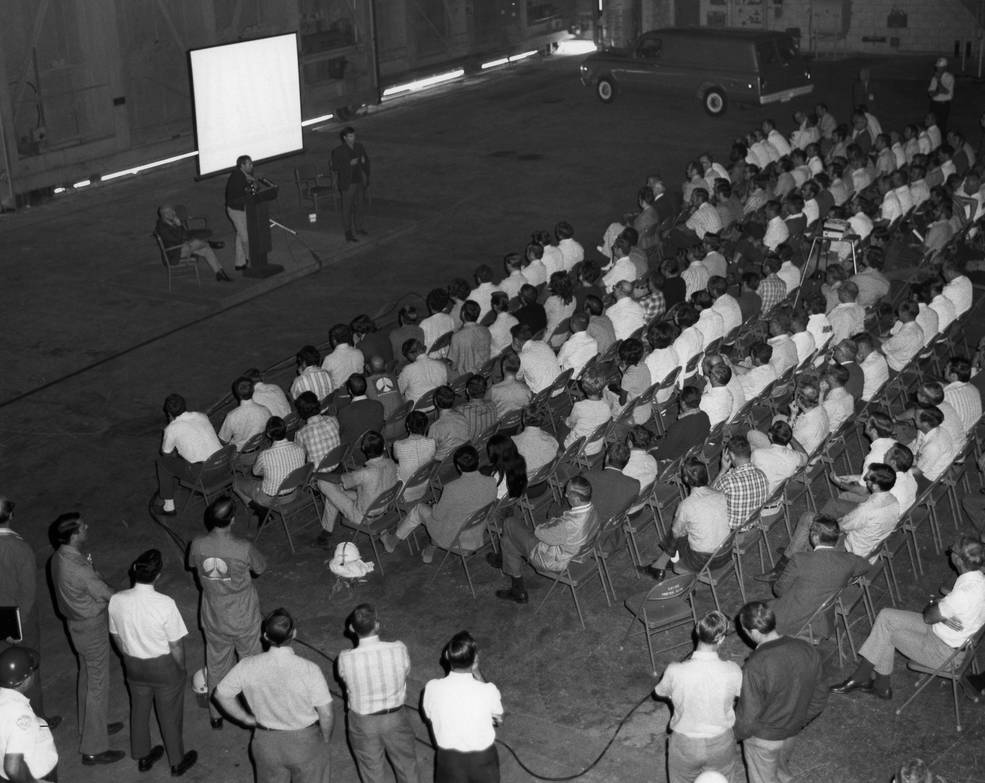
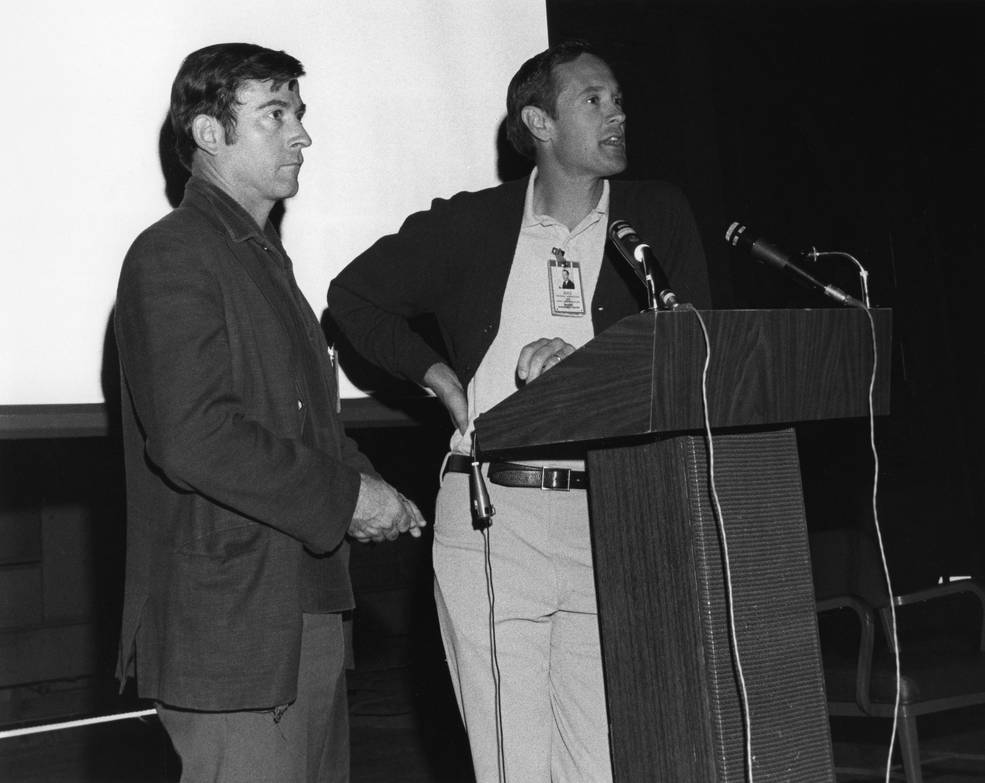
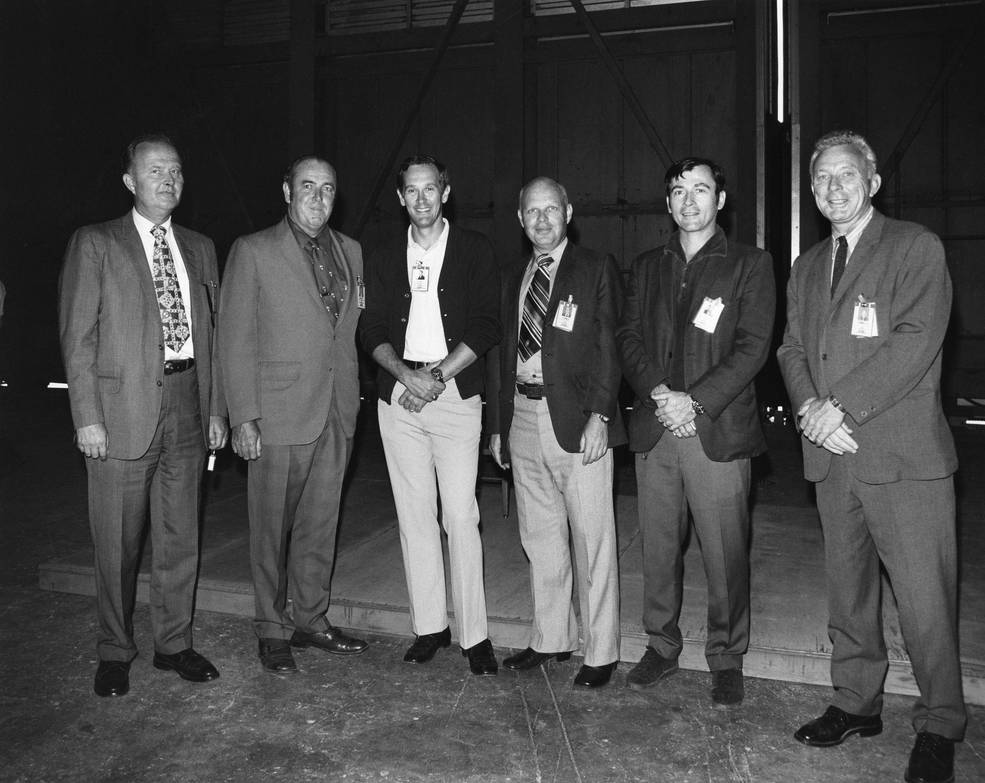
Left: Apollo 16 astronauts John W. Young and Charles M. Duke speak to assembled employees in the Vehicle Assembly Building at NASA’s Kennedy Space Center (KSC) in Florida. Middle: Young, left, and Duke answer questions from the audience. Right: Duke and Young pose with KSC personnel including Charles L. Buckley, Chief of Security at KSC, second from left, Lead Test Supervisor Gordon Turner, fourth from left, and Launch Operations Manager Paul C. Donnelly, right.
Young and Duke, and their backups Haise and Mitchell, rehearsed the lunar surface activities, including driving the LRV at KSC. The training included deploying the instruments of the Apollo Lunar Surface Experiment Package and other science experiments, with the astronauts communicating with controllers and scientists in the Mission Control Center at the Manned Spacecraft Center (MSC), now NASA’s Johnson Space Center in Houston, as they would during the actual mission.
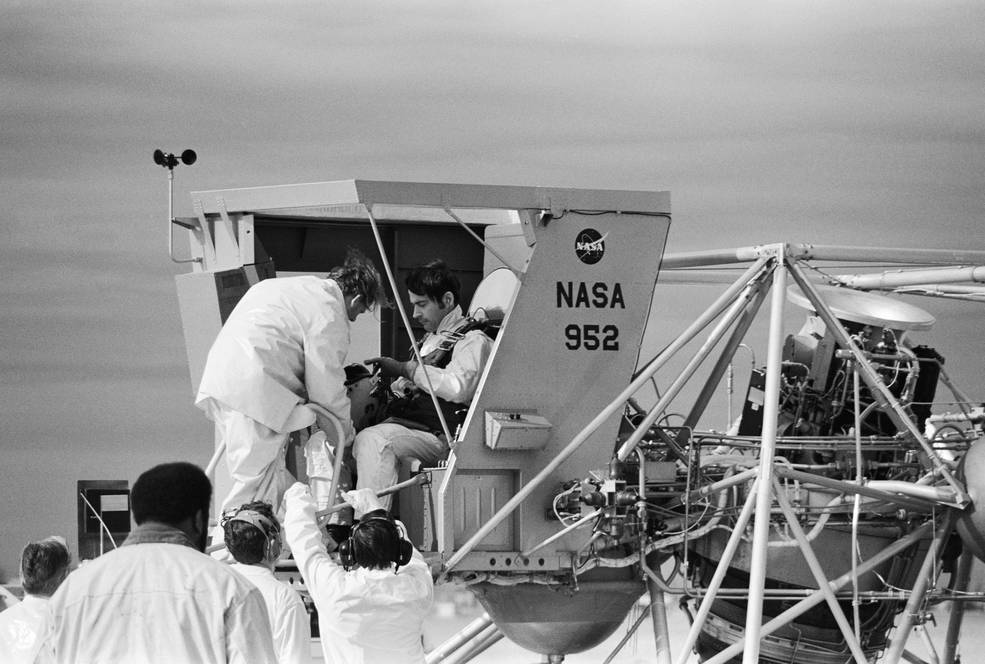
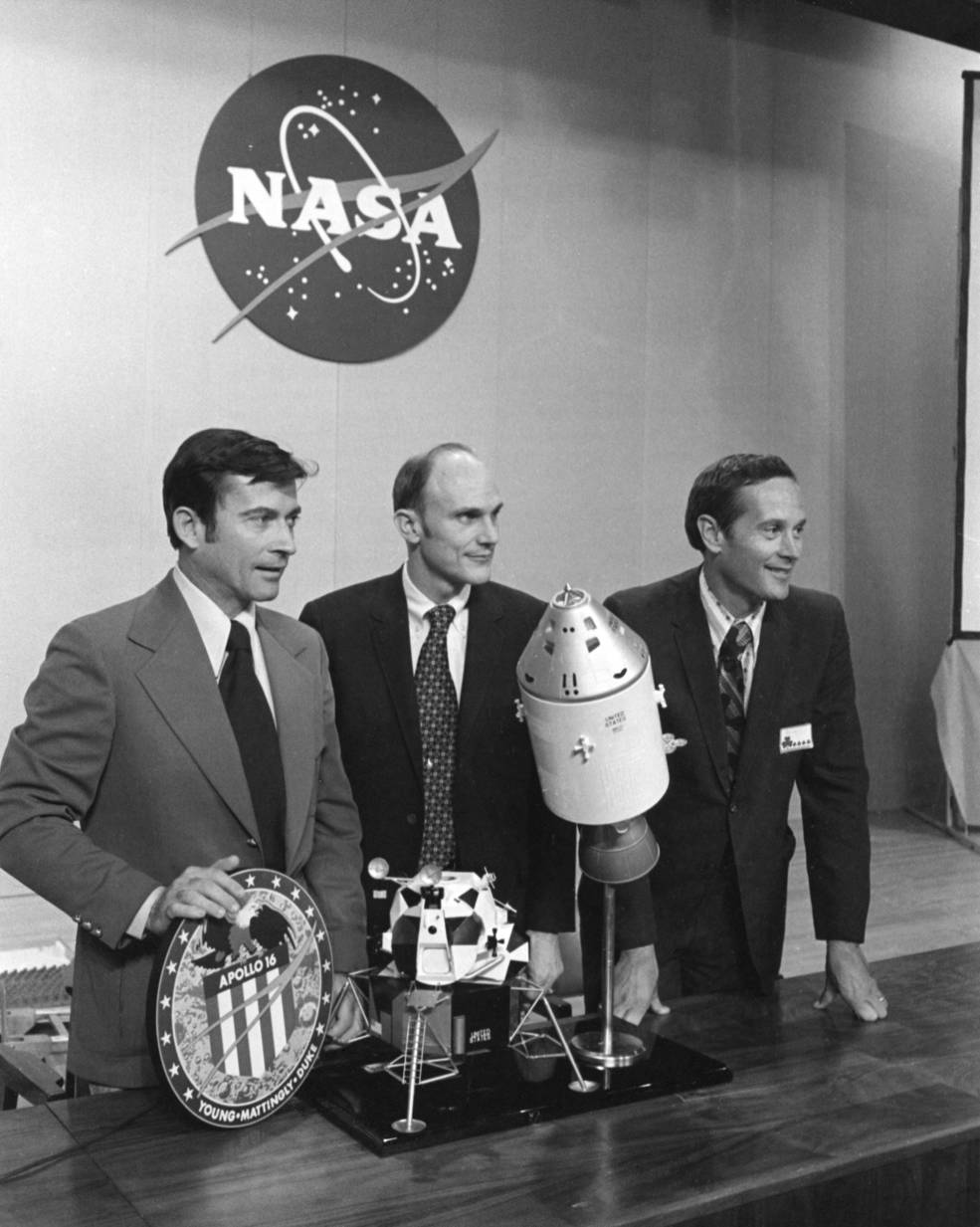
Left: Apollo 16 astronaut John W. Young trains for the descent to the Moon’s surface in the Lunar Landing Training Vehicle at Ellington Air Force Base. Right: Apollo 16 astronauts Young, Thomas K. “Ken” Mattingly, and Charles M. Duke pose for photographers after their last preflight press conference.
At Ellington Air Force Base near MSC, Young and his backup Haise completed their final practice flights in the Lunar Landing Training Vehicle (LLTV). The LLTV simulated the flying characteristics of the Lunar Module during the final several hundred feet of the descent to the surface. Young, Mattingly, and Duke held their final preflight press conference at MSC on March 17, answering reporters’ questions about their upcoming mission.
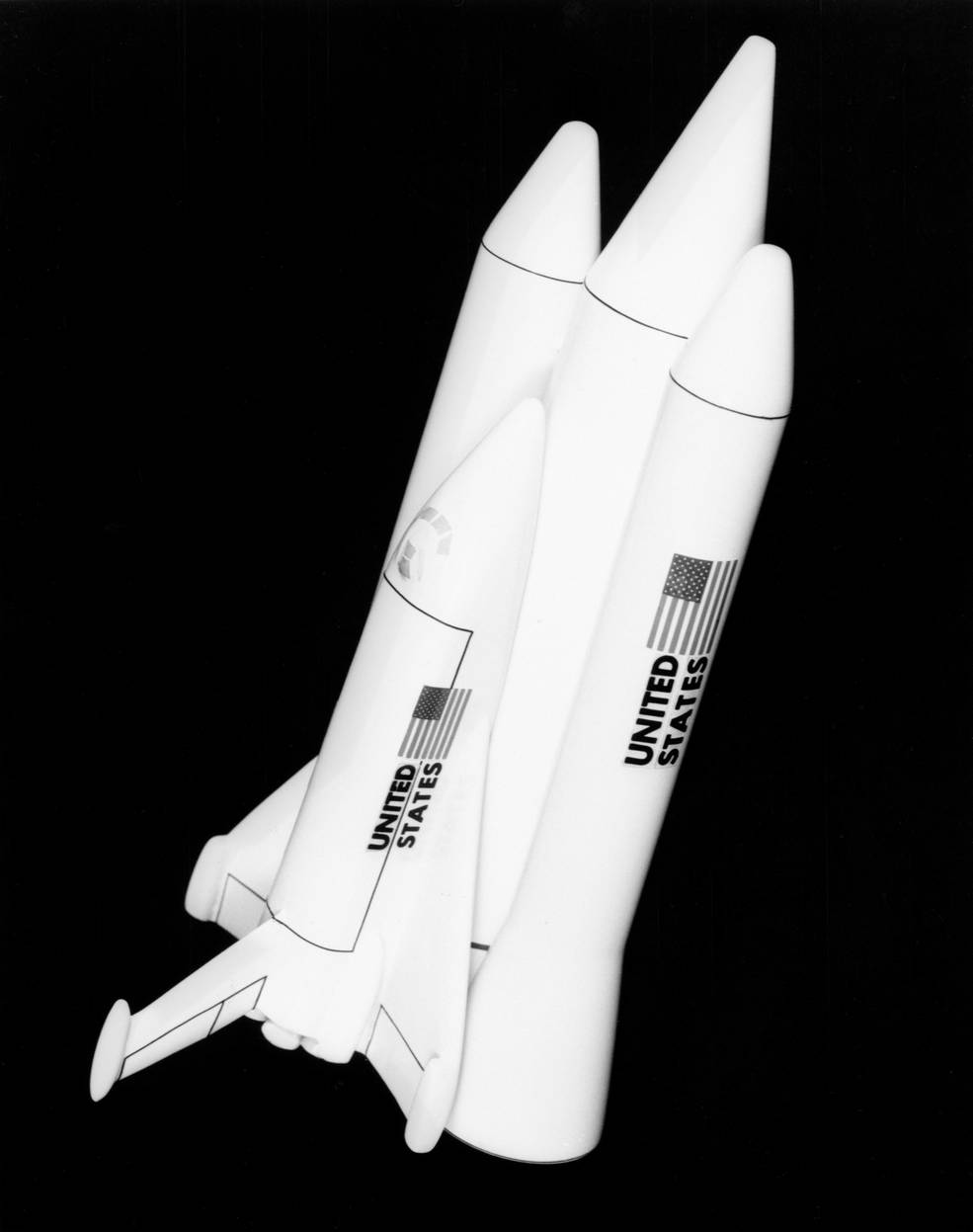
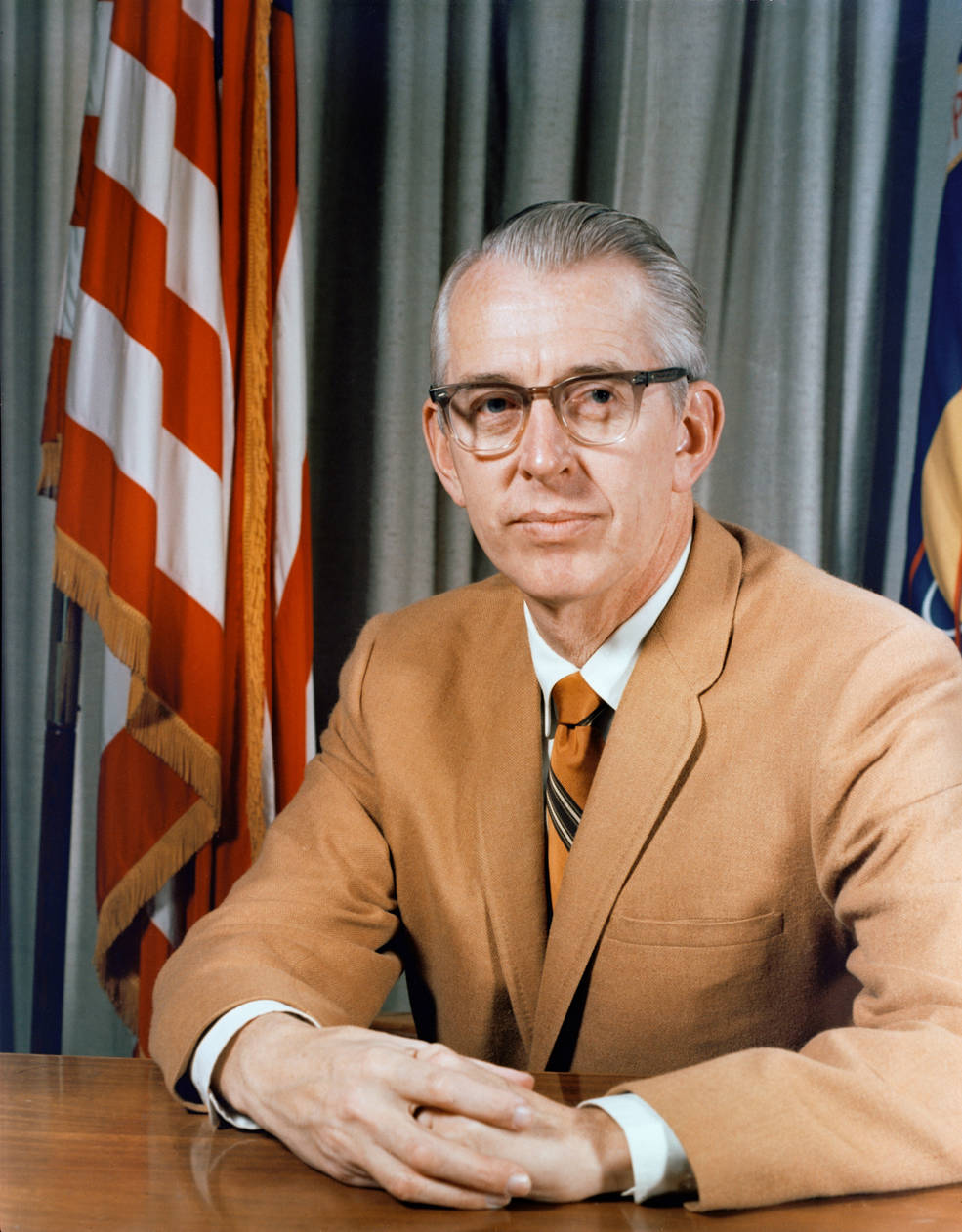
Left: A model from 1972 of the space shuttle showing the two side-mounted solid rocket boosters. Right: NASA Administrator James C. Fletcher.
In other news around NASA, on March 15, 1972, Administrator James C. Fletcher announced the selection of reusable solid rocket boosters for the space shuttle, the new program approved in January. The boosters, along with the shuttle’s own main engines, would lift the vehicle off the launch pad. After two minutes, the boosters would separate and land in the ocean under parachutes to be recovered, refurbished, and reused on later flights. The orbiter would continue into orbit under the power of its own engines. On March 17, the agency released a Request for Proposals for industry teams to submit design options for the space shuttle, with selection expected later in the year. At the time, NASA expected the first orbital flight of the space shuttle to take place by 1978.
To be continued…
With special thanks to John Tribe, Peter Chitko, and Malcolm Glenn.
World events in March 1972:
March 2 – Jean-Bédel Bokassa declares himself president for life in Central African Republic.
March 2 – NASA launches Pioneer 10 to explore Jupiter.
March 7 – Roberta Flack releases “The First Time Ever I Saw Your Face,” becomes Billboard Song of the Year for 1972.
March 15 – “The Godfather” premieres in New York City.
March 25 – America’s album “America” reaches number 1 on the charts.
March 27 – The Soviet Union launches Venera 8 to explore Venus.
March 28 – Wilt Chamberlain plays his last professional basketball game.






















